Exterior
Although the choice of components for SFF cases is often limited to a certain size, this is not the case with the Corsair 2000D Airflow. Not when it comes to a graphics card or CPU cooler. Aside from the fact that this case only takes up a very small area on the desk/ground, it can also impress with huge perforations on each side. We’ll break down the sum of all the positives and negatives in this review, which traditionally includes cooling tests as well.
Basic parameters
| Parameters | Corsair |
| 2000D Airflow | |
| Supported motherboard formats | Mini-ITX |
| Supported PSU format | SFX, SFX-L |
| CPU cooler | 170 mm * |
| Graphics cards | up to 365 mm |
| Fan | 8× 120 mm/ 2× 140 mm |
| Supported liquid radiators | 1× 280/360 mm + 1× 240 mm |
| 2,5" positions | 3 |
| 3,5" positions | no |
| 5,25" positions | no |
| Dimensions [H/D/W] (and volume) | 458 × 271 × 200 mm (24 L – without feet) |
| Weight | 4.5 kg |
| Materials | steel + plastic |
| Connectivity | 2× USB 3.2 gen. 1 type A + 1× USB 3.2 gen. 2 type C + 1× 3,5 mm jack |
| MSRP | 124,90 EUR |
* The official specs list only 90 mm, which is obviously incorrect, as we were also able to install a Scythe Fuma 2 rev. B dual-tower cooler, above which there is still some space left.
Exterior
The case is packed in a cardboard box in which it is secured with two polystyrene fillings. But this time, it is polystyrene which holds together and does not crumble. At the same time, it also serves as a storage compartment for the accessories supplied with the case. You’ll find a large number of single-use zip ties, screws for installing hardware, and a brief brochure with safety information.
When you pull it out of the box, you’re left with a slim, but in proportion to the body, tall case in your hands. Its weight, just under five kilograms, suggests that the structure will not be made only of plastic, although it may seem so at first glance. All the removable panels are plastic and, most importantly, all perforated. Even though this is not a premium case, these parts have a stylish, “expensive” look to them.
Both side panels are secured with two screws from the back of the case. I always appreciate it when the screws, even after loosening, still hold on to the parts where they belong. This is also the case with the Corsair 2000D, which makes sure you won’t lose them when disassembling. The panel mounting itself is very identical to that used by Fractal Design or even the recently tested Asus Prime AP201 case. You simply put the panel in the required position, click it onto the case and it holds. It has to be said that they hold firmly. The screws are just such a bonus for securing, for example, when transporting.
The perforation of the panels consists of two parts. The first one is plastic, you can see it right out of the box. The holes on it are shaped as equilateral triangles with a size of 1.5 mm. The second part is a fine dust filter, which catches even small particles. And I can confirm that it captures dust effectively. The panel can be disassembled via screws, but I thought in vain that the dust filter could be removed. The removability is probably for easier replacement of the side panel handles, should something inadvertently get bent/broken.
The front part is the same as the side panels when it comes to perforation and filtration. Except for the handle. Even though it’s equally click-on, it’s not secured with screws. It’s not even necessary, as you can’t remove the front panel with the sides or top of the case fitted. Behind it, there is space for three 120mm fans. However, you won’t install a liquid cooler radiator here as is usually the case.
The centre part of the front panel is beautifully flush to the two side panels. This is not true of the bottom and top. There, the joint is slightly diverging, which is not a disaster in real life. You probably won’t even notice this flaw until you focus on these parts of the joint.
The lower part of the front panel belongs to the connectors and buttons of the case. On the left is the power button, whose power symbol glows subtly when switched on. A shallow push is all it takes to activate it, and you’ll also get a tactile response that it’s already done. You then have two USB Type-A connectors and one Type-C, which is also faster. For headphones with microphone, you get one shared 3.5mm jack. The last part of the functional panel of the case is the restart button. This one is recessed in the case a bit deeper than the power button, and it also has a deeper activation path. This partially eliminates the possibility of unintentional pressing.
At first glance, the top part appears as another airy side of the case due to the perforated panel. But this is not the case, although there is a fine dust filter. Underneath the magnetic panel is a sheet metal with holes. The largest one is for the power supply. Two Velcro pull-tabs indicate that the power supply cable will be pulled across the case. The top removable part lines up precisely with the other sides panels of the case.
The back is also a little different than what is usual with standard computer cases. The entire section is perforated for airflow directly to the graphics card. There is also a removable dust filter, but it’s not as fine as the other ones. The triangular holes are one millimeter in size. On the right side there are three more zip ties that secure the power supply cable. But you don’t have to worry if your cable is long enough. Corsair has included an extension with the case that is made exactly to measure. There’s a hole at the bottom for threading cables through to the motherboard and graphics card.
On the bottom of the case there are four feet with a roughened contact surface. While it’s not an ideal non-slip material, it does provide a slight resistance. Between the feet you can notice a perforated plastic cap. This is to make access and handling easier when plugging cables into the graphics card and motherboard.
- Contents
- Exterior
- Interior
- Test methodology
- CPU and GPU cooling tests
- Motherboard cooling tests
- SSD cooling tests and under-ceiling temperature
- Conclusion





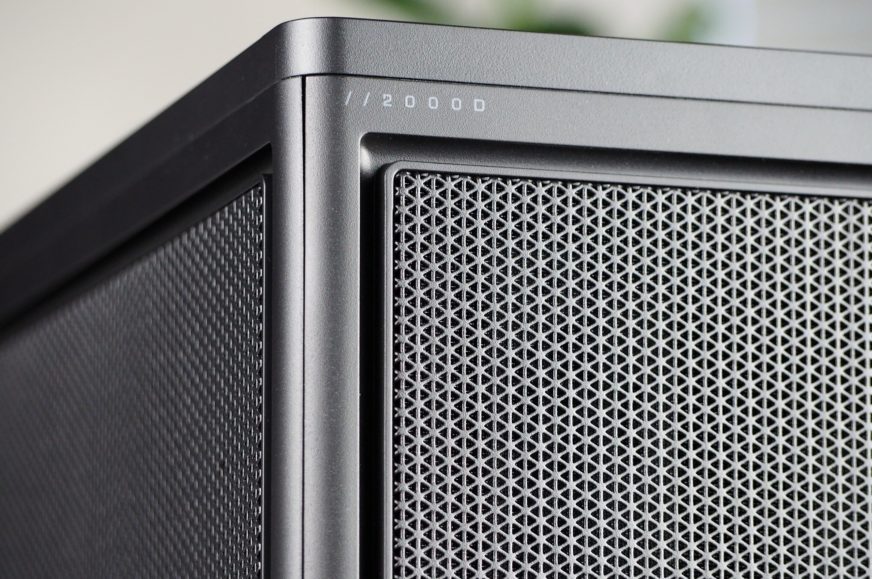

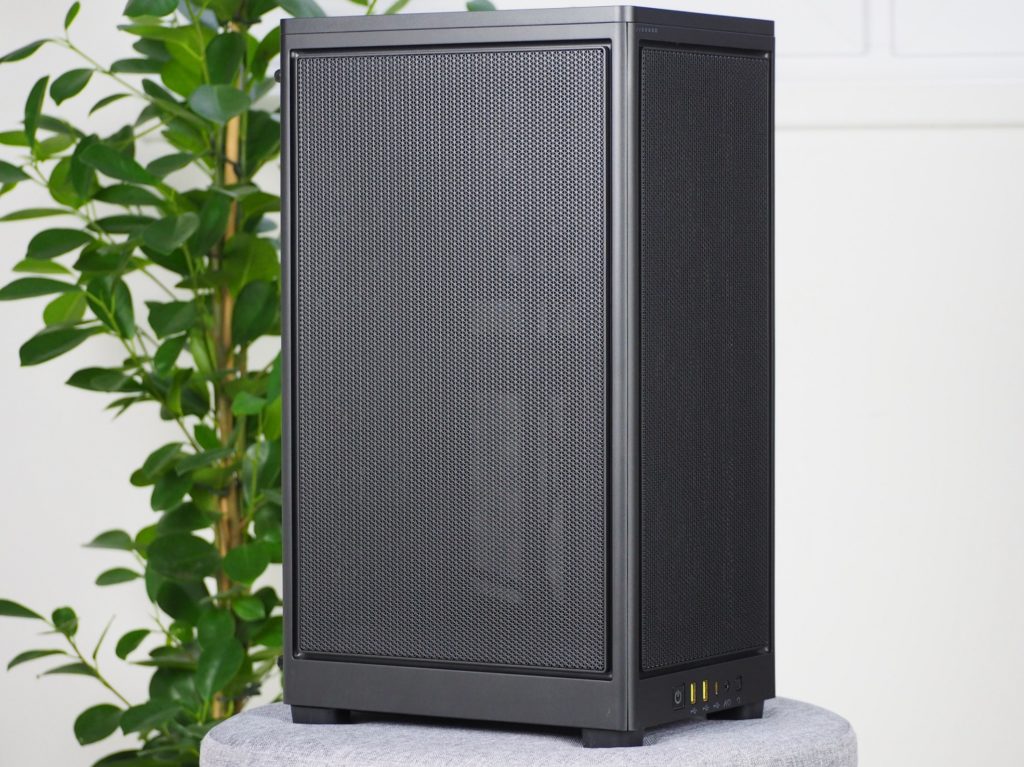
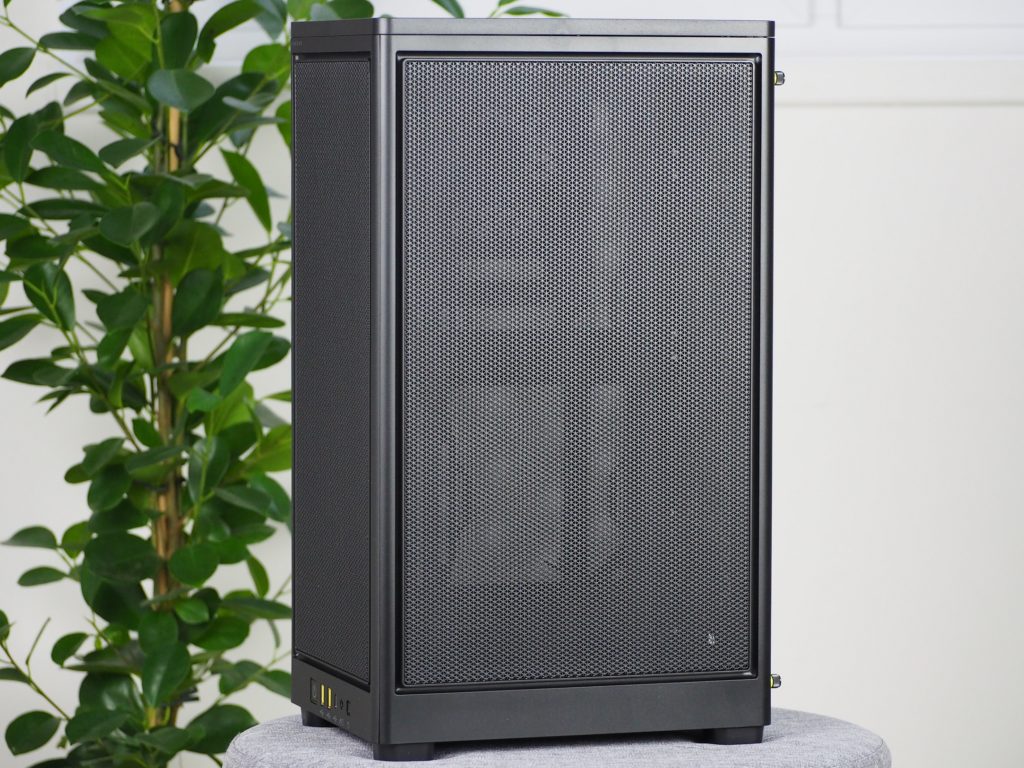
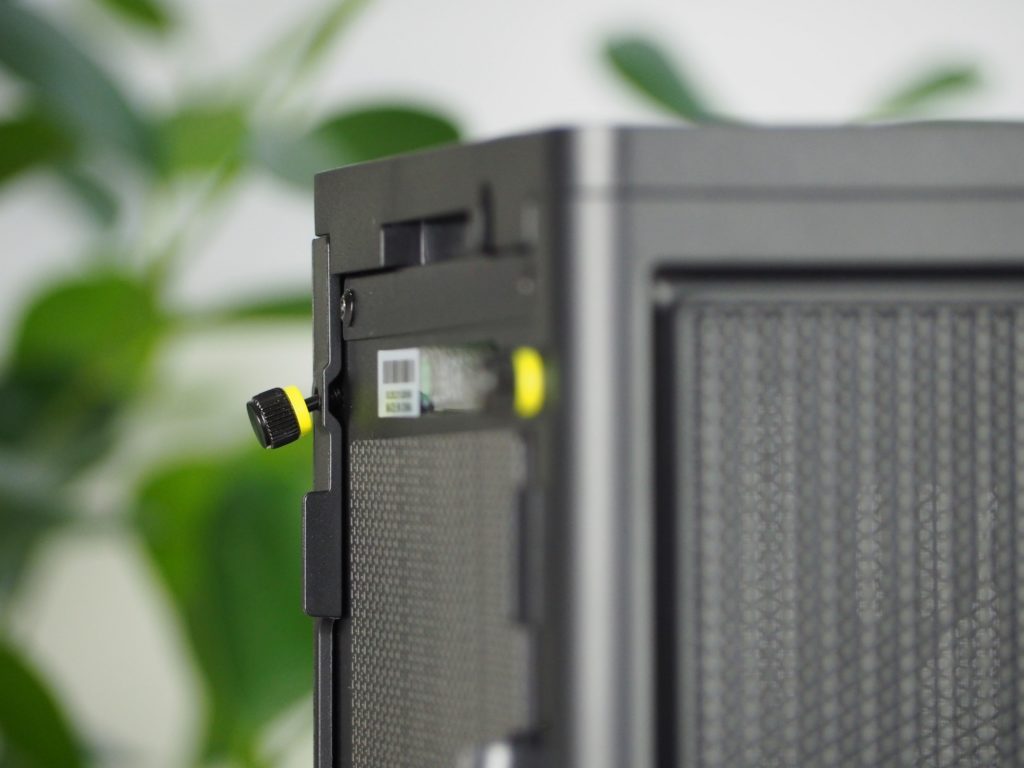

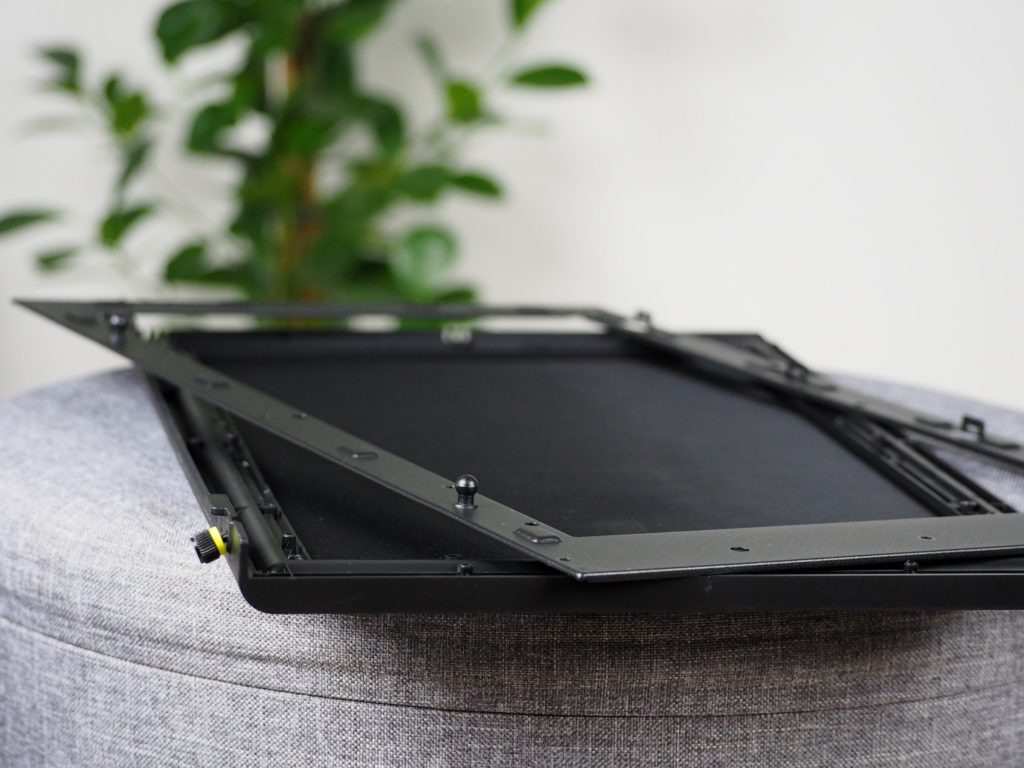
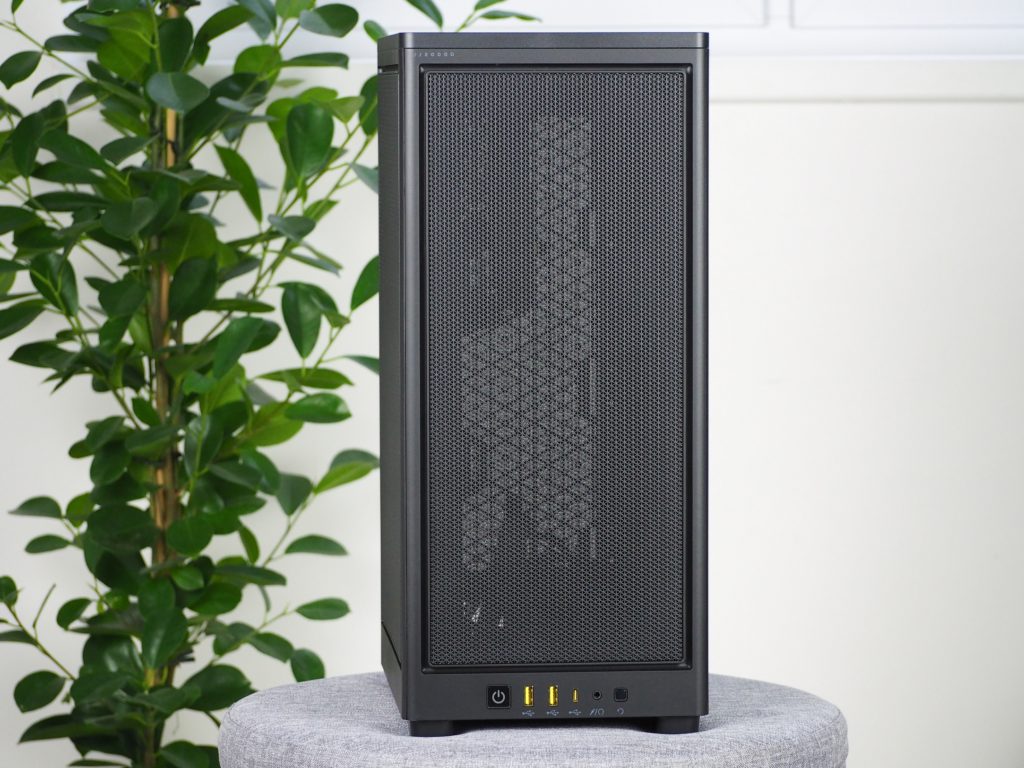
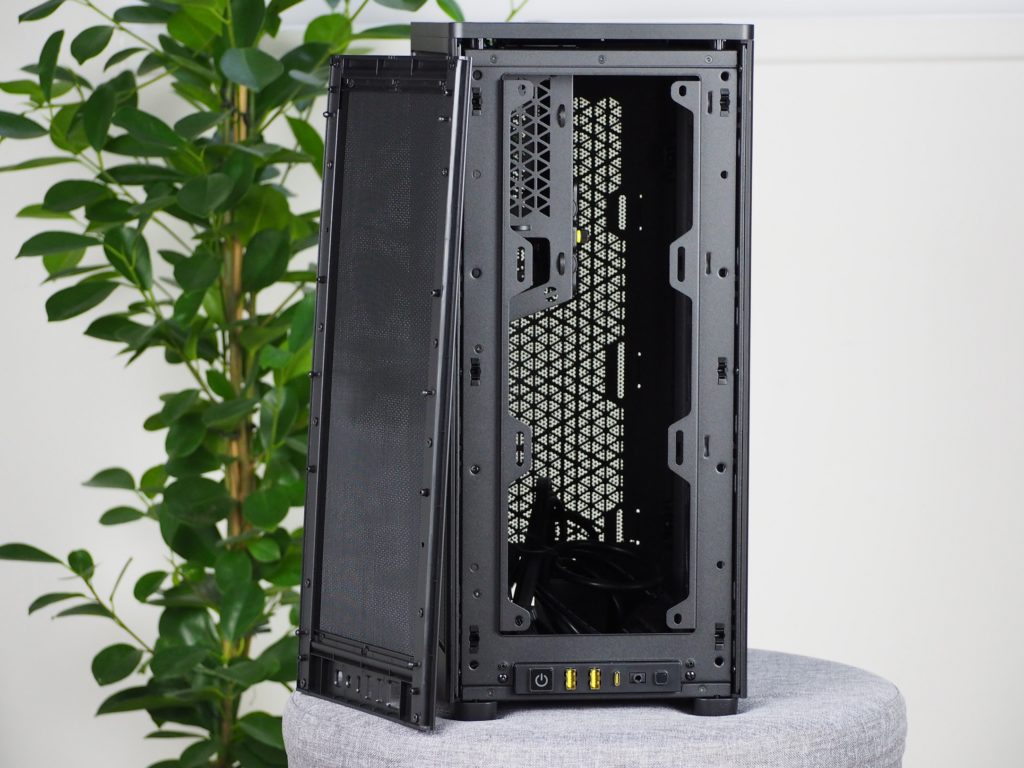
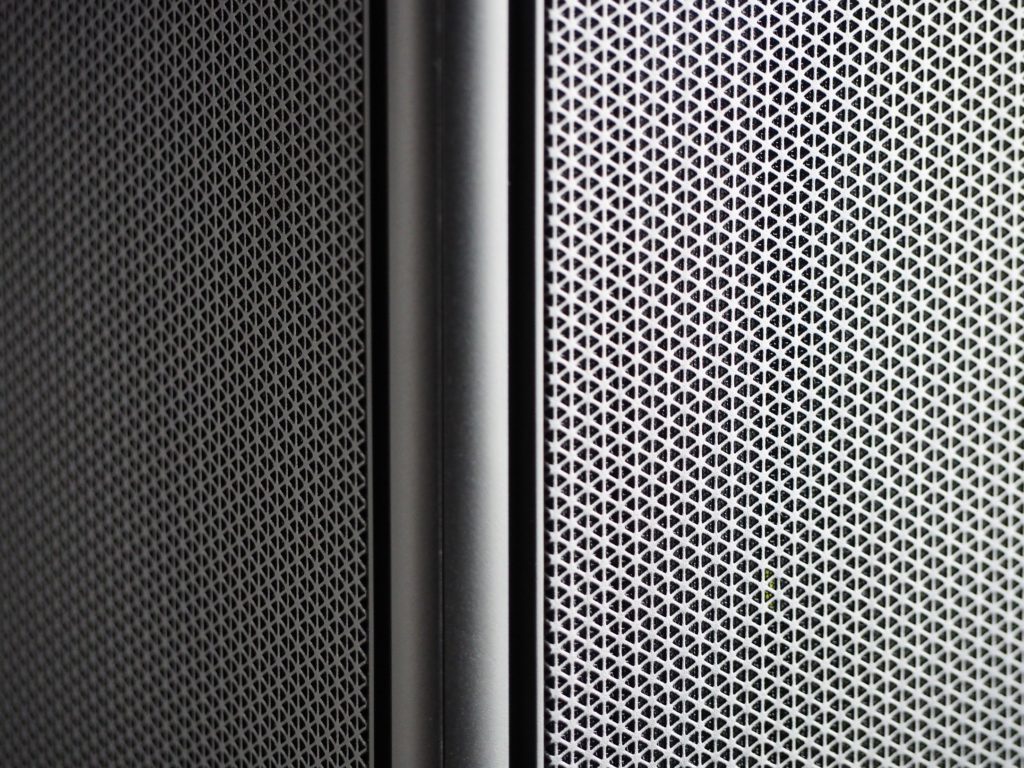

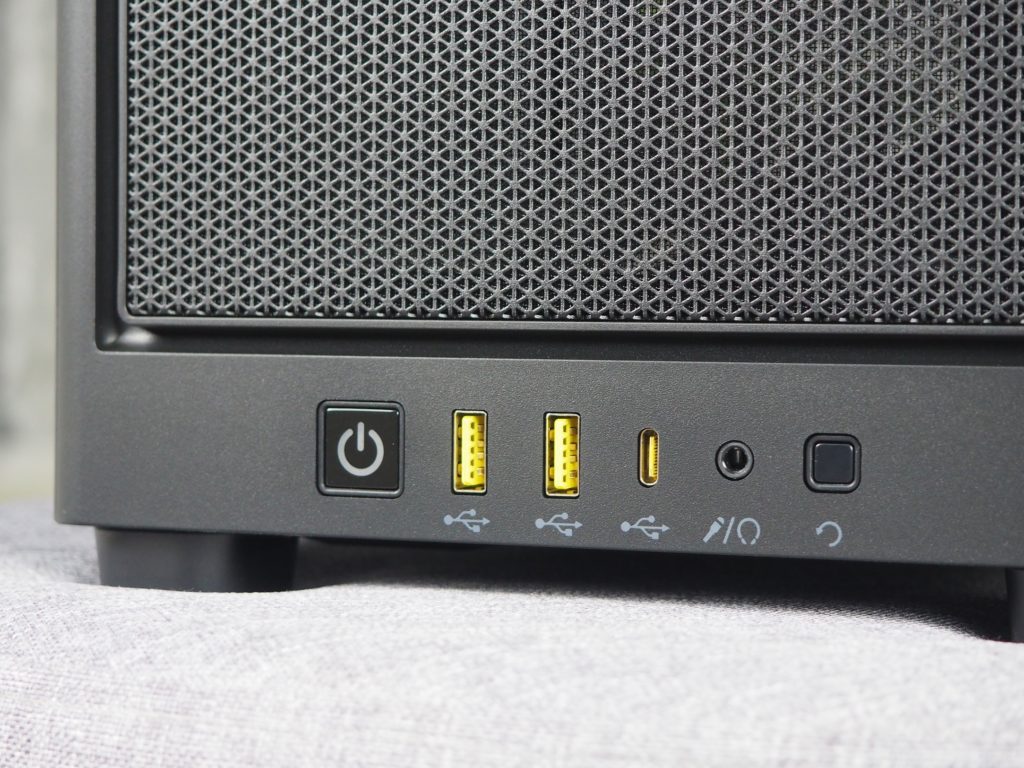

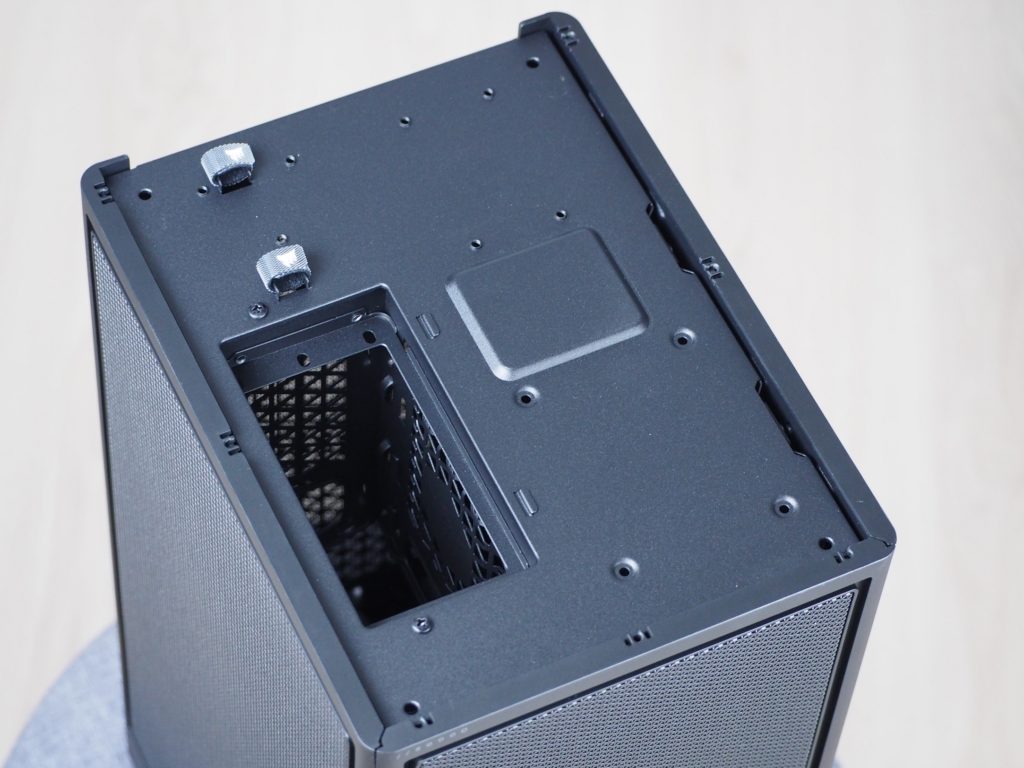

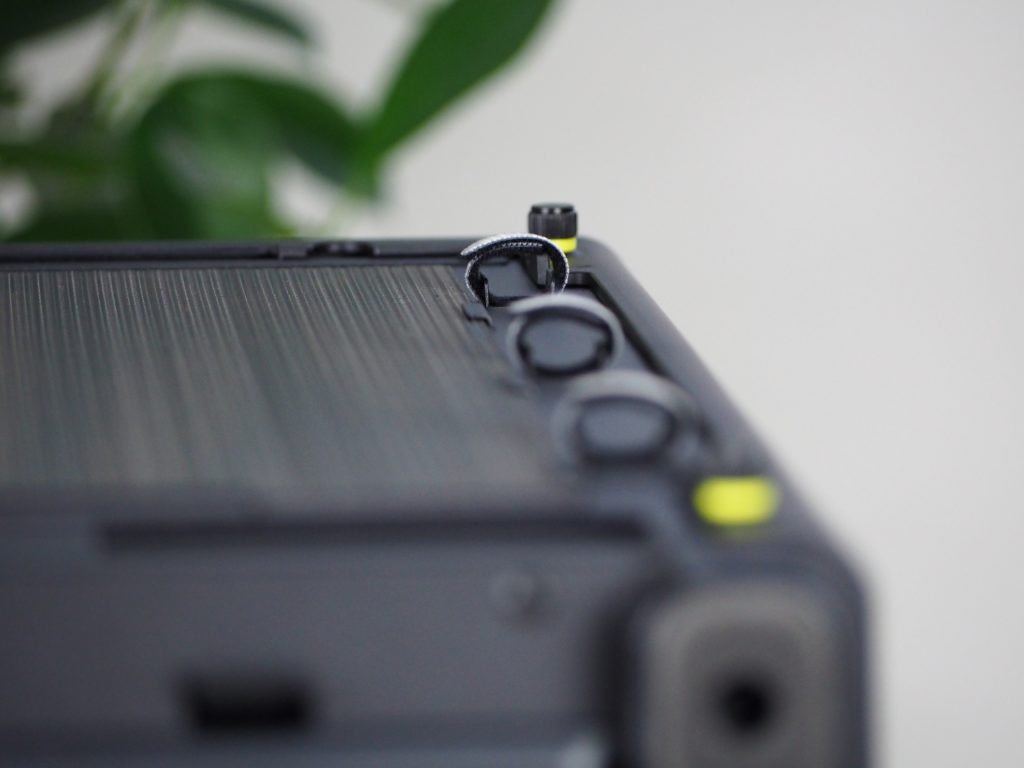

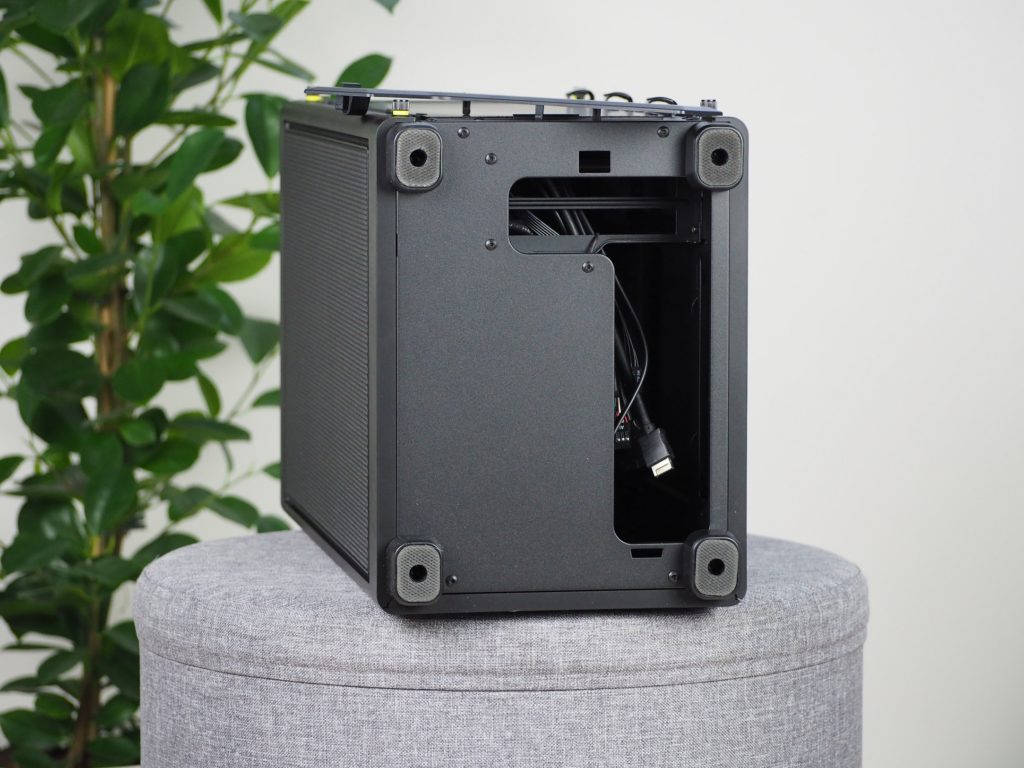



This is another example of stock fans being installed the wrong way. The case fans running as exhaust would help GPU thermals instead of worsening it.
Of course. The strong disproportion of intake to exhaust fans is probably done for aesthetics (through a glass front or perforated screen the light shining through “looks nice”). Well, you make what’s in demand, and when cooling efficiency is far behind how the build looks visually in the priority list… Strong positive pressure is still usually defended by less pollution due to dust, but I don’t know. I’m a bit worried that over time there might not be an alternative in which you can move those fans to different (exhaust) positions according to how they make sense from a functional standpoint.